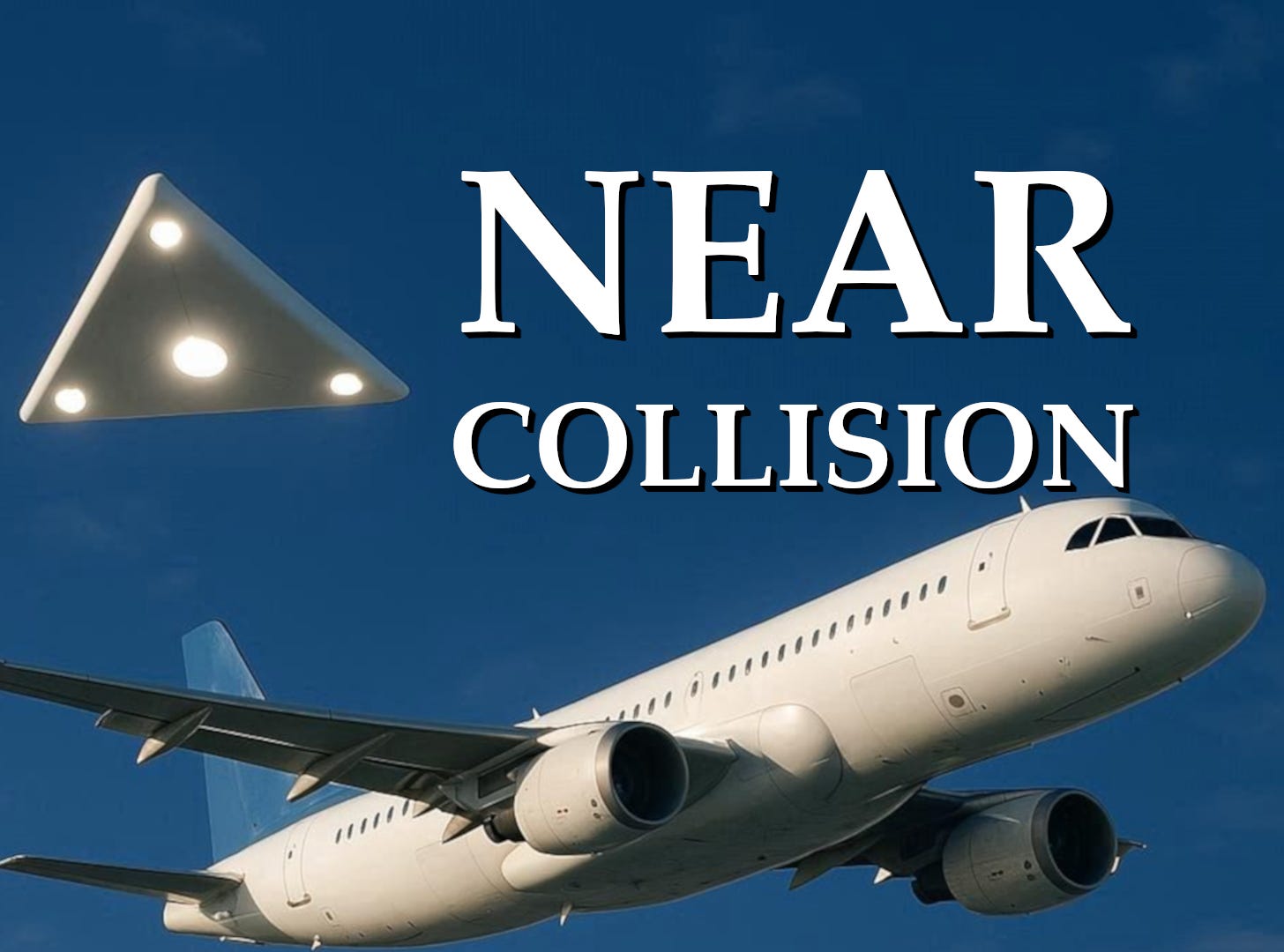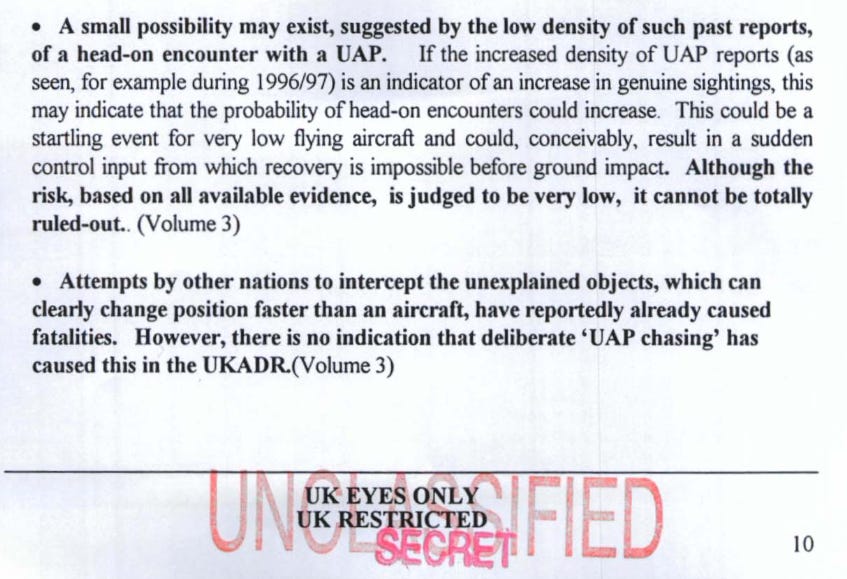Near Collision Between an A320 and an Unidentified Triangular Craft Above London
In an official report published by the UK Airprox Board (UKAB), pilots described an unidentified craft flying 10 meters away from their A320 aircraft over central London.
Only a few countries, such as the UK, make their airprox reports public. Airprox, short for "air proximity hazard," is a mandatory form that air personnel must fill out when aircraft safety is endangered due to a violation of safety distance regulations. The UK Airprox Board (UKAB) then conducts an investigation regarding the incident. Regarding that specific event, the UKAB was "unable to determine the nature of the unknown object."
The encounter occurred on May 19, 2025, over central London in Class A airspace, where all traffic must be coordinated by air traffic control (ATC). The weather was clear. The A320 was cruising at 250 knots (450 km/h) at 9,000 feet (2700m), coming from London Heathrow Airport and heading east.
both the Captain and First Officer saw a bright white object pass overhead from the opposite direction.
It is important to note that both the captain and the copilot observed the object. One might wonder how many other sightings go unreported when only one crew member witnesses an object, fearing that his or her perceptions will be questioned.
The object appeared to be approximately 2-3m in size at the very least, it may have been larger as it filled a good proportion of the windshield.There was no appreciable separation vertical or horizontal.
The fact that the object came so close as to actually fill "a good portion of the windshield " poses a significant threat to aviation safety. The minimum safety distance for visual flight is 1,500 meters, and planes usually keep at least three nautical miles (5.6 km) apart when not operating near an airport. Having an object fly 10 meters away from your plane is a near midair collision event.
“The First Officer observed that it was triangular in shape. The Captain only saw the object for a second or two in peripheral vision so could not reliably comment on the shape. No markings were identified. The object did not appear on TCAS.
The Traffic Collision Avoidance System (TCAS) enables aircraft to communicate with each other and determine whether they are on a collision course. TCAS is mandatory for most commercial and business aircraft. Drones are not equipped with TCAS and are prohibited from flying at such altitudes, particularly in one of the most sensitive and regulated airspaces on Earth. London's altitude limit for drones is 400 feet (120 meters), yet the A320 was cruising at 9,000 feet.
The encounter was immediately reported to London control
UKAB Secretariat reports that an analysis of the NATS radar replay was undertaken and a single primary return was seen at 0.2NM (300 m) ahead of the A320 to the east of Central London at 1808:50 when the A320 had been at 9200ft. There were no further similar returns detected on radar.
Such objects typically have no radar signatures, which is characteristic of advanced platforms that can hover in place regardless of wind effects or fly at hypersonic speeds without sonic booms or heating the atmosphere.
Their speed and small radar profile reduce the chance of radar systems detecting it, and filters automatically remove data regarding immobile echo to reduce clutter for the ATC.
One might wonder if, sensing that it had been detected by a radar pulse, the craft chose to fly straight toward the approaching A320, hoping the radar would assume a false return and hide its signature in the aircraft's radar shadow. Indeed, the initial investigation of the radar recordings revealed nothing.
“Safety Investigations reviewed the radar at the time the pilot of [the A320] reported the sighting, however, no radar contacts associated with the drone were visible.”
The UKAB investigation leaves no doubt about how serious the event was:
In the Board’s opinion the reported altitude and/or description of the object were such that they were unable to determine the nature of the unknown object.
The Board considered that providence had played a major part in the incident and/or a definite risk of collision had existed.
Midair collisions are extremely rare events, often requiring the accumulation of multiple failures on top of another. But if unidentified craft are allowed to roam in one of the most sensitive airspaces, are we really sure air travel is safe? And what remains in the classified airprox reports kept secret throughout the world ? Could unexplained crash be unravelled by UAP interference? The UK defense report on UAP, project Condign, stated :
“A small possibility may exist, suggested by the low density of such past reports, of a head-on encounter with a UAP. If the increased density of UAP reports (as seen, for example during 1996/97) is an indicator of an increase in genuine sightings, this may indicate that the probability of head-on encounters could increase. This could be a startling event for very low flying aircraft and could, conceivably, result in a sudden control input from which recovery is impossible before ground impact. Although the risk, based on all available evidence, is judged to be very low, it cannot be totally ruled-out”
“Attempts by other nations to intercept the unexplained objects, which can clearly change position faster than an aircraft, have reportedly already caused fatalities.”





